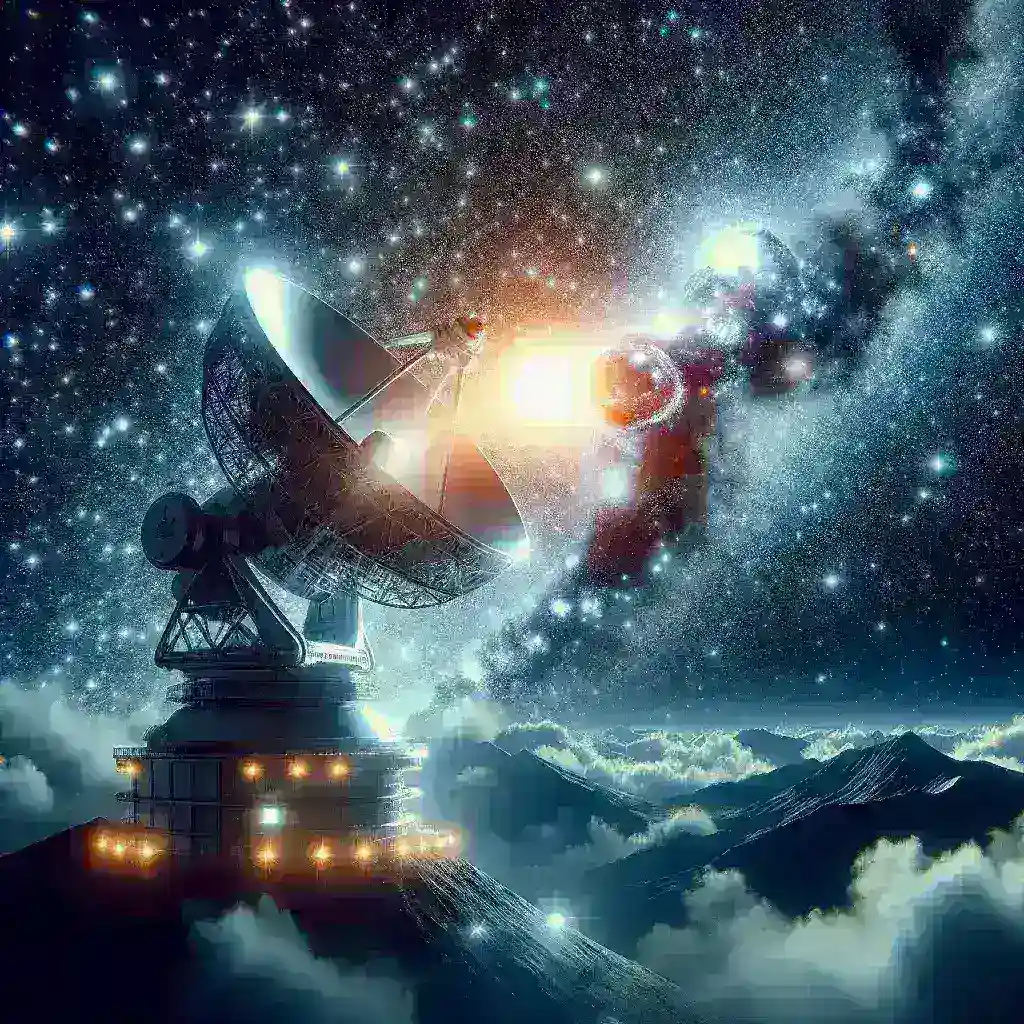Introduction
The universe is a vast and mysterious expanse filled with celestial wonders. Among these wonders are binary star systems, where two stars orbit a common center of mass. Occasionally, these systems can lead to spectacular events known as binary star mergers. This article delves into the exciting intersection of artificial intelligence (AI) and astronomy as AI-enhanced telescopes are increasingly capable of identifying these significant cosmic occurrences.
Understanding Binary Star Mergers
What are Binary Stars?
Binary stars are systems where two stars are gravitationally bound and orbit each other. They can be classified into two main types:
- Visual binaries: These systems can be resolved as two separate stars through telescopes.
- Spectroscopic binaries: These stars cannot be seen as distinct from one another, but their orbit can be inferred from Doppler shifts in their spectra.
The Process of Merging
As binary stars evolve, they can eventually spiral inward due to gravitational radiation—a phenomenon predicted by Einstein’s general relativity. When their distances decrease sufficiently, they may collide, leading to a merger that produces profound consequences, including the formation of a new star, a supernova, or even a black hole.
The Role of AI in Astronomy
A Brief Historical Context
Artificial intelligence has revolutionized numerous fields, including healthcare, finance, and notably, astronomy. In the early days of astronomy, identifying celestial objects was a labor-intensive process requiring meticulous observation and data analysis. However, advancements in AI and machine learning have dramatically enhanced our ability to analyze large datasets.
AI Algorithms in Action
Machine learning algorithms can process vast amounts of data at unprecedented speeds. For instance, AI can recognize patterns and anomalies in light curves—graphs that plot the brightness of stars over time—which are crucial for identifying binary star mergers. This technology allows astronomers to focus on the most promising candidates for further study, streamlining the research process.
The Use of AI-Enhanced Telescopes
How AI Telescopes Work
AI-enhanced telescopes utilize sophisticated algorithms to improve the efficiency and accuracy of astronomical observations. These telescopes can:
- Filter data: AI can sift through massive datasets to filter out noise and irrelevant information, allowing scientists to concentrate on significant signals indicative of binary star mergers.
- Predict outcomes: By analyzing historical merger data, AI systems can predict the likelihood of future mergers happening.
- Automate observations: AI can automate the observation process, allowing telescopes to continuously scan the sky for potential mergers.
Key Developments and Examples
Several groundbreaking projects have integrated AI into their operations. For example, the Laser Interferometer Gravitational-Wave Observatory (LIGO), which detects gravitational waves from merging black holes and neutron stars, has employed AI to enhance its data analysis capabilities. Similarly, the Large Synoptic Survey Telescope (LSST), set to come online soon, aims to generate a comprehensive survey of the sky and will utilize AI to identify transient astronomical events, including binary star mergers.
Implications of Identifying Binary Star Mergers
Scientific Significance
Identifying binary star mergers has profound scientific implications. These events can provide insights into the fundamental nature of matter and the history of the universe. For example, when two neutron stars merge, they create heavy elements, such as gold and platinum, through rapid neutron capture processes. Understanding these processes can shed light on the origin of elements in the universe.
Technological Advancements
As AI continues to evolve, so too will the capabilities of telescopes. Future advancements may lead to:
- Real-time monitoring: Telescopes equipped with AI could provide real-time data analysis, leading to immediate alerts for significant astronomical events.
- Enhanced image resolution: AI can improve image processing, resulting in clearer and more detailed observations of distant celestial bodies.
Challenges and Considerations
Data Overload
Despite the advantages of AI, one significant challenge is the overwhelming volume of data generated by modern telescopes. Astronomers must ensure that their AI systems are capable of effectively managing and interpreting this data without losing critical information.
Ethical Considerations
The integration of AI in astronomy also raises ethical considerations. Researchers must address issues such as data privacy, algorithmic bias, and the transparency of AI decision-making processes.
The Future of AI in Astronomy
Looking ahead, the role of AI in astronomy, particularly in identifying binary star mergers, is set to expand. As AI technology advances, we may witness:
- International Collaboration: Global partnerships among astronomical institutions will facilitate the sharing of data and AI technologies, accelerating discoveries.
- Citizen Science Projects: AI-enabled platforms may engage amateur astronomers in the search for binary star mergers, democratizing access to astronomical research.
Conclusion
AI-enhanced telescopes mark a significant turning point in our exploration of the universe. By effectively identifying binary star mergers, these advanced instruments not only deepen our understanding of stellar evolution but also pave the way for future astronomical breakthroughs. The continued integration of artificial intelligence in astronomy promises to unlock even more mysteries of the cosmos, inviting both scientists and enthusiasts to embark on this exciting journey of discovery.
